OPEN TO LEARNING
Gaurav Batra on
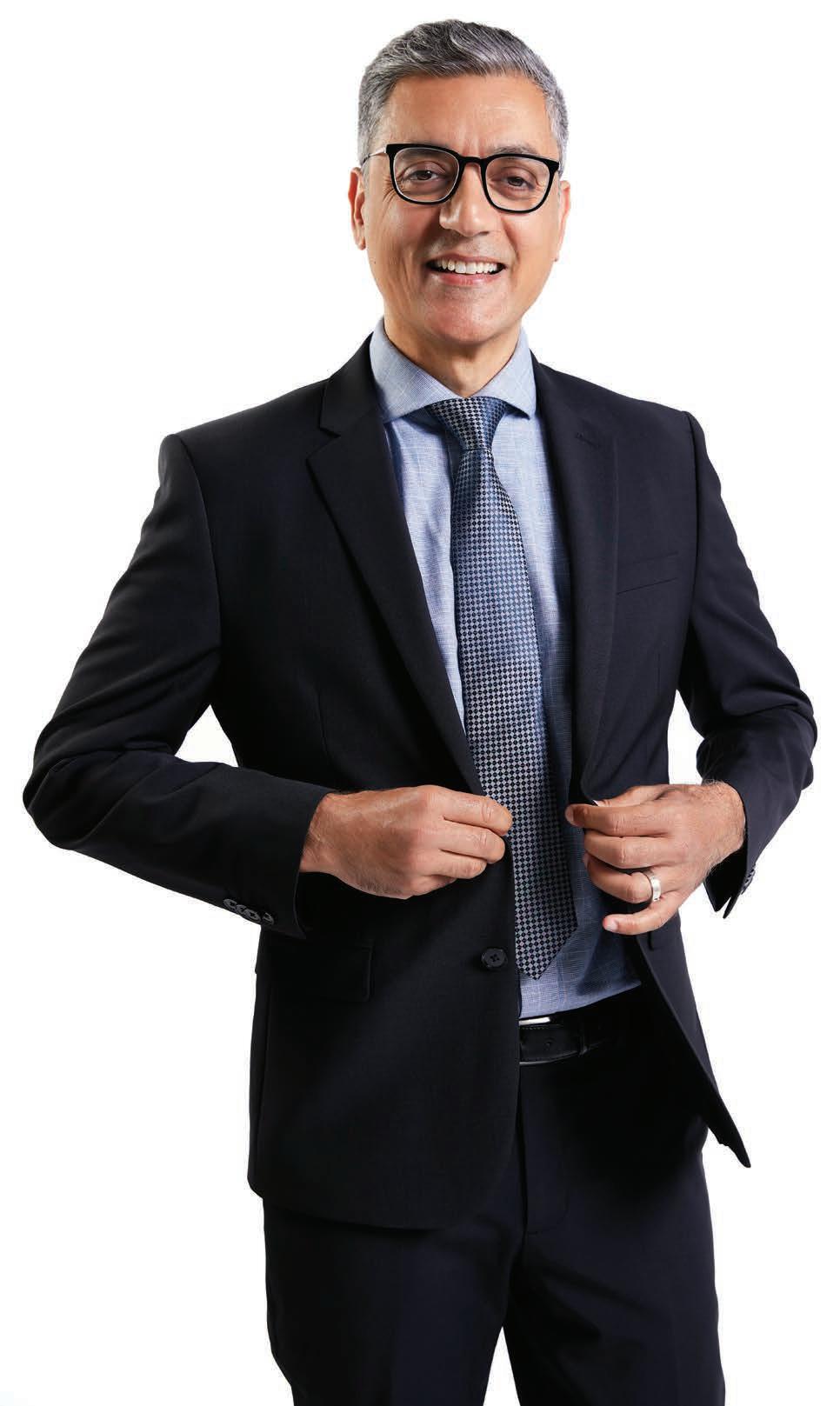
it takes to



 Installer: Keith Panel Systems
IBI Group Architects Canada Inc.
MIKE
Installer: Keith Panel Systems
IBI Group Architects Canada Inc.
MIKE









 Installer: Keith Panel Systems
IBI Group Architects Canada Inc.
MIKE
Installer: Keith Panel Systems
IBI Group Architects Canada Inc.
MIKE




In many respects, most facets of life appear to be slowly returning to nor mal. At least, things seem to be stabilizing in the post-COVID-19 world.
Even restrictions surrounding cross-border travel – mask-wearing on planes, the ArriveCAN app, the testing of travellers and so on, have now been allowed to lapse.
Yet the entire pandemic experience has changed much about how we live, play and, of course, work. It remains to be seen what and how many pandemic-era practices become permanent within employment. Regard less, there are several lessons that supply chain professionals can take away from the past few years regarding work and job hunting. Here are a few:
At one time, supply chain professionals could do their jobs effectively sim ply by using the hands-on skills. Filling out POs, handling inventory and putting out day-to-day fires was once the bulk of what purchasing and sup ply chain professionals did.
Now, they are often the public face of their department and organiza tion. They interact with the C-suite, as well as with customers and vendors. That means communication is one of the skills that employers seek most in supply chain professionals.
A situation with many candidates and few positions means, by and large, the employers control the job market. But many positions available and few candidates equals the opposite, with job seekers in the driver’s seat.
According to experts in our article on supply chain employment on page 8, that’s the situation now. With work-from-home and flexible employment arrangements popular, candidates are looking for positions offering these perks. That may change, so we’ll have to see. But for now, the pandemic has opened up the ongoing possibility of such arrangements for many.
Just as candidates are looking for flexible work arrangements, they’re also not driven in their job searches solely by the prospect of higher salaries.
The pandemic has left some departments short staffed, with those remain ing overworked. Work-from-home arrangements aren’t perfect, and some feel that being cut off from their supervisors and colleagues means they get lit tle recognition or feedback about their performance. Some job seekers are looking for those perks in the post-pandemic employment world.
The pandemic put on hiatus many of the professional development oppor tunities in supply chain and the professional world in general. Confer ences, seminars, and other in-person learning events were cancelled in the name of social distancing.
Although digital options like webinars and online conferences persist ed, the lack of face-to-face interactions meant a less-rich learning experi ence for many. But many in-person events are returning. Supply chain pro fessionals who are comfortable doing so can now take advantage of them.
There’s always more to learn. And knowledge is power, as they say.
MICHAEL POWER 416-441-2085 x7 michael@supplypro.ca

ALEX PAPANOU 416-441-2085 x1 alex@supplypro.ca
LAURA MOFFATT 416-441-2085 x2 lmoffatt@iqbusinessmedia.com
FARIA AHMED 416-919-8338 faria@supplypro.ca
LORI BENSON Procurement Compliance, L&D, Engagement and Knowledge Lead | Business Enablement, Ernst & Young LLP
THOMAS HUDEL Manager, Purchasing and AP, Esri Canada Ltd.
WAEL SAFWAT Procurement Director, Black & McDonald
SHERRY MARSHALL Senior Manager, Meetings, Travel & Card Service, PwC Management Services
KIRUBA SANKAR Director, Program Support, Purchasing and Materials Management— City of Toronto
JEFF RUSSELL Corporate Purchasing Manager
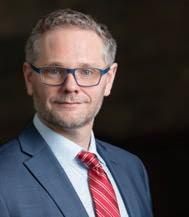
& Inventory Manager, Miller Waste Systems Inc.
Vice President
STEVE WILSON 416-441-2085 x3 swilson@iqbusinessmedia.com
PUBLICATION MAIL AGREEMENT NO. 43096012 ISSN 1497-1569 (print); 1929-6479 (digital)
Mail: 126 Old Sheppard Ave, Toronto ON M2J 3L9
Published six times per year Canada: 1 Year $ 99.95 CDN Outside Canada: 1 Year $ 172.95 USD
Opinions expressed in this magazine are not necessarily those of the editor or the publisher. No liability is assumed for errors or omissions. All advertising is subject to the publisher’s approval. Such approval does not imply any endorsement of the products or services advertised.
Publisher reserves the right to refuse advertising that does not meet the standards of the publication.
No part of the editorial content of this publica tion may be reprinted without the publisher’s written permission. © 2021 iQ Business Media Inc. All rights reserved. Printed in Canada.
The most important economic story of the past decade went largely unnoticed and uncom mented on in the North American press. This summer, the German Parliament unanimously agreed to re-open coal fired plants that were set to close. Granted, there were extenuating circumstances, relat ed to Russia’s invasion of the Ukraine and the explicit threat that natural gas could be shut down because of Germany’s response to that aggression. But here’s what makes this story so compelling: Germany’s Green Party agreed to this decision that on the face of it seems oh-so envi ronmentally unfriendly. When push came to shove, common sense prevailed.
What, exactly, do I mean by common sense? There is a consen sus among the Western elites that we’re on the verge of a climate cri sis due to CO2 emissions. In Janu ary 2019, one of the darlings of the progressive left, US politician Alexandria Ocasio-Cortez, assert ed that the world would end in 12 years if climate change was not addressed. She essentially said that nothing else mattered and if you truly believed that as of Janu ary 2031 all life on the planet would be extinguished, then it would be wildly irresponsible not to do everything to end all CO2 emissions immediately.
I’m skeptical about this alarmism and have never been shy about expressing it. In the 2000’s, I did regular business commentary on CBC radio. I can’t remember how the issue was raised, but I was asked about “global warming”
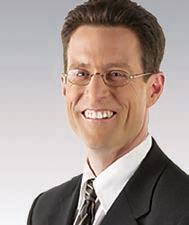
due to CO2 emissions, and I point ed out that when I was in high school, the theory was that excess carbon dioxide would lead to a new Ice Age. I stated that based on the evidence I had seen, I wasn’t sure that the planet was warming, and even if this were the case, whether human economic activity was responsible.
This skepticism outraged many CBC listeners. I was accused of being a “denier” which was flat-out silly. As a direct result, I was asked to be part of a panel discussion about the issue, and I was happy to participate. One of the presenters was introduced as Canada’s lead ing expert around climate (which may or may not have been the case) and in the course of the dis cussion (which occurred in 2005), he guaranteed that by the year 2010 Toronto would never see snow in the winter, and people would be “dying like flies” from heat-stroke in the summer.
Oops! To believe that we are on the brink of a crisis, you have to accept the following: Mankind is capable of precisely measuring temperatures from more than a century ago. The assertion is that average temperatures have increased by one (1) degree Celsius since the start of the Industrial Revolution. Then you have to be sure that the warming is attribut able to CO2 emissions. Then you have to believe that even though there is no evidence that natural disasters have increased markedly in the past 150 years, it would be totally different if average tem peratures increase similarly over the next decade.
Here’s what Germany’s Green Party recognized and it’s roughly
analogous to the wisdom con tained in the adage that a bird in the hand is worth two in the bush. If Germany ran out of energy this winter, there would be an immedi ate crisis. People would freeze to death. Germany’s economy would be plunged into the most severe recession imaginable. You weigh that certainty against the theoreti cal possibility that there might be devastating climate change at some point in the future. But we don’t know when it would occur and have no idea what the conse quences would be.
Common sense seems to be spreading globally. In late August, Japan’s Prime Minister announced that his country would restart idled nuclear plants. If you recall, Japan turned away from this ener gy source just over a decade ago in the wake of the Fukushima disaster. However, since then there have been significant safety upgrades to nuclear power plants. There are currently in excess of 50 power plants under construc tion in the world, with China and India leading the way with 15 and 8, respectively. And Japan is con sidering not only re-opening existing plants but building new ones as well.
What does this mean for Cana da’s energy policy? If we were smart, we would be pumping out as much natural gas and oil as pos sible with prices this high. Then take the wealth created and if Canadians as a collective are truly worried about CO2 emissions, commit to build nuclear power plants and explore options like solar and wind. Individually, if
Toronto-based Michael Hlinka is a tenured professor at George Brown College. He hosts a weekly pod cast about wagering on professional football. His website is www. michaelhlinka.com.
you are personally convinced that global warming due to CO2 emis sions is a looming crisis, no-one is stopping you from doing every thing in your power to reduce your carbon footprint.
I’d just urge that you use some common sense when you do so. SP
An article entitled “The Big WakeUp Call” from the August 2020 issue of Supply Professional hinted at the global changes descending on us (Glocalization), the impact those changes will have on our accepted norms, and how they will define our future.
Those impacts are stronger than we first thought. In the past, the power of the US depended primari ly on its military might. However, as demographics change, that coun try must change. In the last 75-odd years, both Canada and the US have evolved from predominately white-majority-controlled nations into more pluralistic countries. This has caused tensions and resulted in no major ethnic or racial group holding the bulk of the power in either country. This blurs lines and disrupts past norms as we struggle to adapt.
Why does this matter to Canadi ans? Canada and America are pre dominantly “soft-cultured” societ ies and have pockets fighting to hold on to traditional cultural roots that they see as threatened.
For example, in the US, thou sands of supporters of former Pres ident Donald Trump gathered in Washington, D.C., claiming that the 2020 election had been “stolen.” Contrast this to the Canadian march by supporters in the “Free dom Convoy” that protested in Ottawa earlier this year. Both exposed deeper roots related to their perceived “loss” of their nations’ traditional cultures.
The questions of “what is cultur al diversity?” and “what are accept able norms?” are front and centre. Simply put, cultural diversity is the quality of diverse or different cul
tures, as opposed to monoculture, which is what many of us were used to. However, it’s not that simple anymore. The transition to cultur al diversity has been rocky for some, making it difficult to navigate currently accepted social norms. This can further inflame existing social tensions, leading to some of the unrest we’ve seen recently.
Canada was the first country in the world to adopt a policy of mul ticulturalism. That policy marked its 50th anniversary in 2021, yet the COVID-19 pandemic has exac erbated racism and hate that has affected Indigenous peoples as well as Black, Asian, Muslim, Jewish, and other racialized and religious minority communities.
Statistics Canada research shows that hate crimes increased by 37 per cent in 2020, exposing pitfalls of cultural “looseness.”
By looseness, I’m referring to a culture that can change, rather than one stuck rigidly to past norms. The ability to pivot away from the looseness or tightness (meaning a strictly unchanging culture) is important not just for societies but for organizations seeking both innovation and rejuvenation.
This is important, and impacts managers as well as the workplace. How can organizations thrive in this changing world? To move for ward, managers must understand the impacts of diversity on the organization and how best to trans verse turbulent waters.
In the article “Managing a cultural ly diverse workforce: Diversity per spectives in organizations” in the International Journal of Intercultur
al Relations, the authors identify five diversity perspectives repre senting ideologies for internal con sistencies. The distinct patterns of each perspective reveal a deeper insight into the diversity manage ment processes and the areas for success to help leave the pandemic behind and build strong interna tional organizations.
The following five structural pillars were identified as the criti cal supports needed to ensure an organization’s continued future success:
1. Reinforcing homogeneity: Strive for a homogeneous work force. Employees feel better work ing with similar expectations and as part of the same team. People fit into an organization when they are perceived to be similarly treat ed and can assimilate.
2. Colour blindness: Managers must understand that qualification matters in the organization, not background. Promotion must be dependent upon employee perfor mance, not on their backgrounds. Employees must feel welcome and should thrive as long as they meet the necessary requirements.
3. Fairness: This must be regarded as one of an organization’s most important pillars, giving employees from disadvantaged groups specific support for their further develop ment. The organization must be culturally diverse, and equal employment opportunities must be taken seriously.
4. Access: There are certain jobs/ functions for which people of dif ferent cultural backgrounds are particularly well qualified and suit ed. Matching employees’ cultural
backgrounds with that of their cli ents/customers fosters the quality of access within the organization –people fit into an organization when employee diversity matches the diversity of its clients/ customers.
5. Integration and learning: Cultural diversity brings challeng ing new and different ideas, along with additional knowledge, to the workplace. Diversity promotes innovation and helps develop skills in addressing new challenges.
This framework presents an opportunity to help propel organi zations to yet unimagined heights. All we have to do is accept these challenges while seizing the possi bilities presented to us. SP

“Managers must understand the impacts of diversity on the organization and how best to transverse turbulent waters.”Mahmud Khamis is a supply chain professional in Mississauga.
A.P. Moller - Maersk has acquired LF Logistics, a Hong Kong-based con tract logistics company, with capabil ities within omnichannel fulfillment, e-commerce, and inland transport in the Asia-Pacific region. LF Logistics will be rebranded to Maersk.
“I am thrilled to welcome LF Logis tics to Maersk,” said Ditlev Blicher, Maersk’s regional managing director of Asia Pacific. “With the addition of LF Logistics, Maersk gains unique and best-in-class capabilities to servicing the important and fast-growing con sumer markets in Asia. LF Logistics expertise in omnichannel fulfillment positions us well with the global e-commerce market.”
Maersk will add 223 warehouses to the existing portfolio, bringing the to tal number of facilities to 549 globally.
LF Logistics employs 10,000 people, operates a Pan-Asian network.
The company specializes in B2B and B2C distribution solutions within retail, wholesale, and e-commerce.
Global trade technology is playing an increasingly important role for companies, yet many businesses are falling behind in adoption, says the Thompson Reuters Institute’s Global Trade Report 2022.
However, companies appear to be lagging in upgrading these systems, the research suggests. Close to half (49 per cent) of businesses world wide are either behind the curve or in the early stages of adoption.
Canadian Pacific has launched a web-based carbon emissions calcu lator, giving customers insight into the carbon footprint of its freight rail transportation services.
The tool enables complex, tailored emissions calculations and incor porates customer-specific ship ping details to calculate route and commodity-specific greenhouse gas (GHG) emissions.
The carbon calculator allows CP’s customers to explore the impacts of their emissions footprint and make decisions to reduce freight transportation emissions by choosing the lowest carbon-emitting transpor tation mode.
The carbon emissions calculator provides a framework to engage across the value chain to identify and collaborate on opportunities to reduce GHG emissions within supply chains, the company said.
Over eight in 10 (81 per cent) of sur vey respondents said that the solution to rapidly changing customs and tax environments lay in adopting more capable global trade technologies.

As well, 19 per cent still operate in highly siloed environments with disparate systems for each region or business unit, limiting their ability to share, compare, and analyze data.
About 87 per cent of Canadians fa vour buying products from companies that use circular economy measures. As well, the same percentage of consumers say their behaviour has a direct impact on the environment.
That’s according to a study of 1,000 Canadian consumers, launched by Capterra Canada, designed to understand participation in sustain able consumerism and the circular economy.
Further, despite a lack of confidence in their knowledge of the circular economy (only 13 per cent were con fident in their understanding), Canadi ans remain interested in contributing to sustainable shopping.
And while 88 per cent said they ‘actively care’ about extending the lifecycle of the products they buy, only eight percent routinely partici pate in buy-back programs.
“With buy-back programs, just as with many other sustainable prac tices, the onus cannot fall entirely on the consumer,” said Tess Anaya, analyst for the study. “Business es wishing to appeal to sustain able-minded consumers should not only invest in trade-in programs, locally sourced products/supplies, and eco-friendly manufacturing processes, but also aim to be as transparent as possible about these changes in marketing efforts.”
Nulogy has appointed supply chain industry veteran Christine Barnhart as vice-president, product marketing and go-to-market.
Barnhart will focus on Nulogy’s new product initiatives, working with the company’s product, marketing, and sales teams. Barnhart’s previous roles include vice-president, product strat egy and go-to-market at Verusen; and senior director of product and industry market strategy for Infor and its supply chain management solutions. Barnhart was also an award-winning supply chain practitioner, with more than 20 years of expertise in manu facturing, purchasing, and planning at various companies.
“Christine’s experience in go-tomarket strategies, market research, and new product introductions will be invaluable to Nulogy as we roll out significant enhancements and new solutions in the coming months,” said Jason Tham, CEO, Nulogy. “I am excited to welcome her to Nulogy’s leadership team, where her experi ence will be a major strength as our growth continues to accelerate.”
Barnhart holds a BSEE from the University of Evansville and an MBA from the University of Louis ville. She is an APICS-certified pro fessional in Inventory and Production Management (CPIM).

Neil Drew can sum up Canada’s procurement job market in just a few words: “Super, super busy.”
That same job market was flat in 2020, and last year represented a transition period, said Drew, director at Winchesters, a recruit ment firm specializing in procure ment, purchasing, sourcing, and related fields. But this year has seen an uptick. “There’s a massive demand for procurement profes sionals and not necessarily enough supply in the key areas,” Drew said.
The procurement and supply chain job market has seen uncertainty over the past few years. COVID-19 and the flexible working conditions that fol lowed have changed expectations for workers and companies alike.
Post-pandemic economic turmoil, and trends like “quite quitting” and “the great resignation,” have added uncer tainty to employment prospects.
Yet procurement and supply chain appear to be exiting the pan demic in good shape, Drew said, with organizations much more reli ant on the field for their success.
Areas like the CPG field and public sector are hungry for talent. Both those areas often allow hybrid or remote working arrangements, which means many employees in those fields are staying put for now.
The skill set employers require has remained mostly the same as
in previous years, Drew says. Com munication is an crucial competen cy, while the dynamic work envi ronment means that adaptability is even more important.
Still, there remains more jobs avail able than candidates, with less move ment than expected, he notes. Many candidates also express a desire for greater fulfillment from their jobs.
“There are a lot of people who are open to changing their jobs, but they’re open to changing their jobs if all of their motivations are
ticked,” Drew says. “And they’re quite different. Whether it’s money, flexibility, work-life balance, cul ture, progression, everyone’s differ ent, everyone has a different sense of things.”
For employers looking to attract talent, Drew recommends ensuring that the salary offered for a position is within the proper range. While salaries have increased this year, it’s been by only $5,000 or $10,000 per level. Direct levels and VP positions have largely stayed the same, while the middle-to-management positions have seen a salary jump.
Flexibility is also important to candidates, with hybrid work models still popular. Employee recognition is another important factor, although that’s become more difficult with employees and managers interacting less due to remote working.
“And then obviously growth and development from promotions and all that is still important,” Drew says.
“If people know there’s a path and then with a flexible employer, that’s something you can do to retain. There’s an opportunity in training and recognition right now that might have gone down a little bit since we’ve become more remote.”
Sean Naidu, senior manager –procurement/purchasing recruitment at Hays, agrees the job market is cur rently candidate driven. It’s the job seeker who is in control, with flexi bility to work from home and salary expectations among the issues candi dates are most interested in.
The talent shortage exists across every industry and profession which, Naidu says, is driven by people either changing careers or looking to leave their employers due to a lack of growth opportunities, limited flexi bility with work conditions, unmet salary expectations and so on.
Communication, the ability to influence stakeholders, and lead change, sit atop Naidu’s list of skills that employers seek most. Candidates that can work as the procurement function evolves have an advantage.
“Companies are still looking for people who have the ability to influence stakeholders, to work as a partner in the business, who can deal with ambiguity, someone that can foster relationships,” Naidu says. “Those are still the same skills that are in demand.”
There’s a lot of movement within the field, largely due to changes in certain industries, candidates looking to grow professionally, and the expectations surrounding salary and flexibility mentioned above. Talent retention remains a struggle for many organizations since candidates are in the driver’s seat at the moment.
Regarding employee retention, Naidu says an adequate work-life balance is the most important fac tor among candidates considering
PROFESSIONALswitching jobs or careers. Organi zations should assess whether they’re providing enough flexibili ty to employees, he recommends. Take time to interact with staff, provide support and encourage ment, and acknowledge small wins. There are many candidates looking to leave their current employer due to a lack of staffing that’s left them overworked, in a toxic environment, with a disap pointing salary, no work-fromhome flexibility or an unsupport ive boss, Naidu says.
“Through COVID, companies that have gone through changes and reorgs, leaning out their team, it leads to more work for somebody that’s already in the group that’s taking the work and getting over loaded,” Naidu says. “That causes them to do more work, not being recognized for it, the same pay, and they feel burnt out. That will natu rally lead to them trying to find something else.”
Hiring more staff or spreading the work to someone else (or taking it on yourself) can help alleviate pressure on overworked team mem bers, he noted.
The talent gap exists at almost every level of the supply chain – from entry level to senior leadership, says Abe Eshkenazi, CEO of the Associa tion for Supply Chain Management (ASCM). That shortage has worsened due to the pandemic and a “lack of alignment” on supply chains. “Sup ply chain has taken a hit over the past couple of years and not being able to respond to the demand surges
or a lot of the disruptions that we’re facing right now,” he notes.
Eshkenazi recommends expand ing the talent search to fields like finance and engineering, where people are already qualified for supply chain. Look at those in entry level positions, what their qualifica tions are and if they’ve earned sup ply chain degrees or are transition ing into the field, he says.
Regarding skills, Eshkenazi sees a shift. Historically, subject matter expertise was enough. But that’s no longer the case, Eshkenazi says. Organizations need people who are proficient beyond internal operations. Supply chain professionals must often work with vendors and custom ers, making communication skills even more important.



“You’re looking at both sides of the supply chain, which really does require a different skill set,” he says. “This is where we need, with in the supply chain industry, to do a better job of preparing individu
als for the jobs in supply chain.”
Collaboration is another import ant competency, as linear supply chains fade and give way to a net work structure. Leadership is another rising skill as supply chain takes on more visibility.
To develop those skills, organi zations should identify the training and competencies required for today’s professional roles, Eshke nazi says. He encouraged those organizations to invest in mentor ship and internship programs, as well as job rotation opportunities.
“We’ve got to identify what it takes now to be a supply chain pro fessional,” he says. “What are the competencies? What are the experi ences required? What are the certi fications required for these individ uals? Supply chain professionals are engaged in every aspect of the organization. Committing to their ongoing development and engage ment and leadership opportunities, that’s a winning formula.” SP
“There’s a massive demand for procurement professionals and not necessarily enough supply in the key areas.”BY MICHAEL POWER
It’s common to hear from supply chain profes sionals that they fell into the vocation almost by accident. Often, those professionals make their way to the field from some other area like engineering or finance. But for Gaurav Batra, the plunge into the business world – and from there into supply chain – was as much about necessity as it was by chance.
At about age 14, and while still living in his native India, Batra joined the family business when his father, who ran the business, con tracted a spinal condition that made it difficult for him to continue running the business. At the time, the family owned an automobile parts retail company in the commercial and political hub of New Delhi. While challenging, the situation also exposed Batra to entrepre neurship at a young age. And as rewarding as the foray into the family business was, Batra had to juggle his new role in the business while managing his schoolwork.
“That helped shape a lot of my approach to engagement today, and what I do and how I do it,” says Batra, who now lives with his family in Oakville, Ontario and runs a busi
ness transformation consulting firm. “That early experience, as challenging as it was as a child, really helped me significantly in dealing with people and managing situations.”
But Batra didn’t stay with the family busi ness for his entire career. His foray into the supply chain began as a shop floor associate with an apparel manufacturer in New Delhi. The company made apparel for various companies, including The Gap, Baby Gap and Banana Republic, among other clients. The role helped Batra formulate his own busi ness ideas, and he eventually landed in Paris, France, sourcing and manufacturing textiles for clients based in that city.
It was also in Paris that he met his future wife, Anu, who now owns and operates a design er label called Anu Raina.
When he returned to India from Paris, he and his new wife established a textiles business called Just Beans. The new venture manufac tured and exported home textiles, focusing on organic, eco-friendly linen and cotton prod
ucts. The end product fused modern designs with traditional methods of production. The company’s strength, Batra said, lay in sourcing and product development.
“It was a very interesting supply chain chal lenge because we had to get these people work ing used to centuries and centuries of doing stuff in one way, to get them to do it in a differ ent way,” Batra says. “It led to a massive amount of success in Japan – somehow this idea of being eco-friendly and organic really hit the mark with our Japanese clients.”
The company’s products proved so popular in that country that Batra went from managing the sourcing process and product development to eventually turning the business over to a Jap anese trading firm.
By around 2004, the business was doing well and Batra decided to move his young fami ly to Toronto, where he had enrolled at the Uni versity of Toronto’s Rotman School of Manage ment in the fulltime MBA program. By that time, he had already completed an undergradu ate degree in commerce at the University of Delhi. He had a four-year-old son, and his
daughter was born during his time as a student.
Before arriving in Toronto, Batra faced a choice between US or Canadian’s graduate schools. Their permanent resident status came through at about the same time, there was a good financial case to study in Canada, where he would pay domestic tuition fees. And with a sister already living in the Toronto area, it simply made sense to study in this country.
“I’ll be honest, personally, the Canadian value system resonated with us far more than the US, to a point where we couldn’t see our selves living in the US long term,” Batra says. “So, we said, ‘this is much closer to how we feel and operate and where we would rather have our kids grow up.’ The decision was clear that it will be Canada.”
The MBA focused heavily on finance, although Batra wanted to go back into sourcing and procurement once finished. He had his sights set on consulting after his degree finished, since he felt that would be a fast way to learn.
He finished his MBA in 2006 and immedi ately joined a consulting firm. But by 2009, Batra had decided to set up his own indepen dent consulting company.
His theory of quick learning has turned out to be accurate. Working with an insurance cli ent, for example, has meant he learned about combined ratios and how insurance operates, indemnity spend, and how some of the sourcing and procurement decisions are different in that field. Consulting has also allowed him to use his own sourcing and procurement skills.
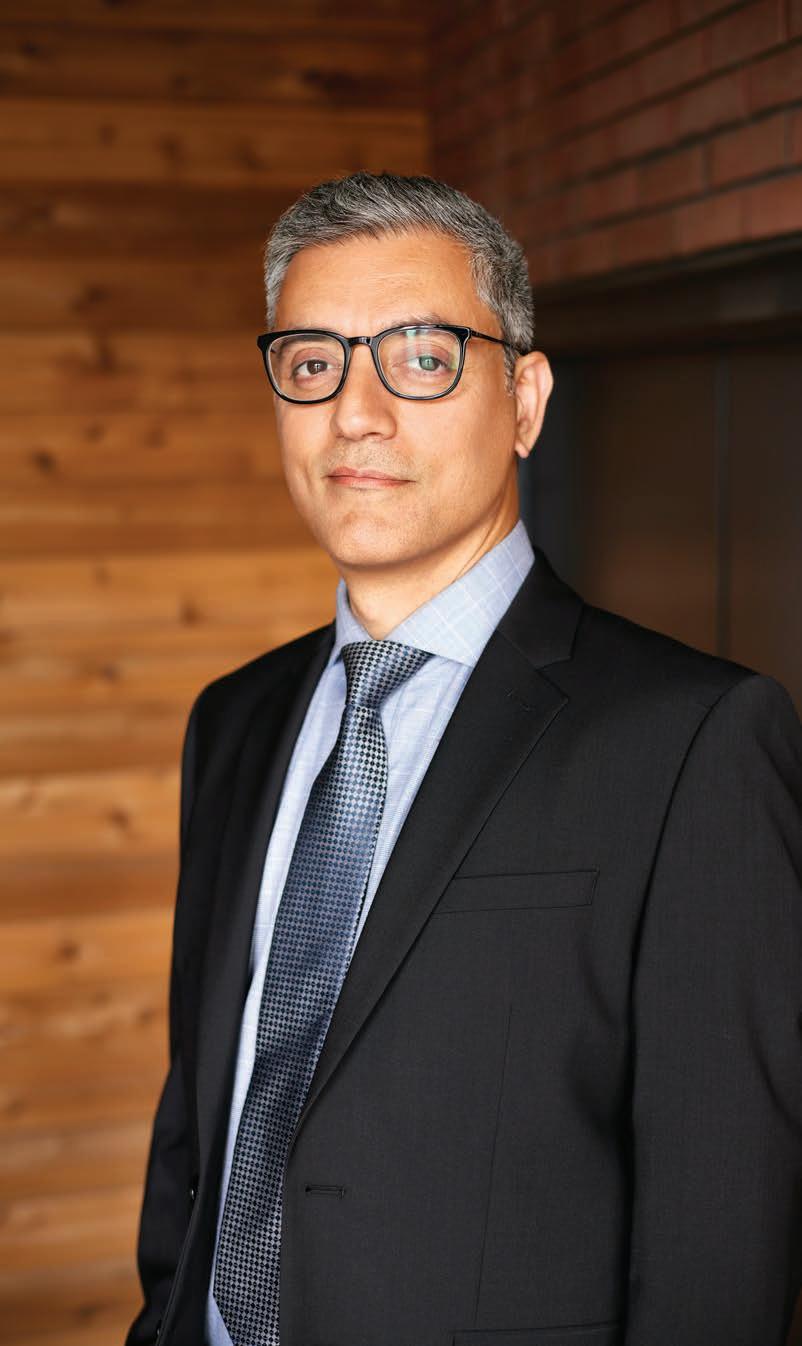
An early project saw him help a large pharma retailer assess their self-distribution potential. He also helped lead a significant, four-year trans formation for a manufacturing firm, harmoniz ing their supply chain operations across their North American manufacturing facilities.
Another project, this time for a financial institu tion, involved helping the organization under stand their spend, categorize it, and provide a roadmap for achieving visibility and more effective governance of that spend.
Whereas many large consulting firms will only give advice, Batra leads his clients through the process until an assignment is completed.
“I roll up my sleeves and get down to work as their representative on the project,” he says. “I’m basically one of the business leads and then I help them get through the delivery por tion of that project, not just the strategy part.”
MIKEDue to the complexity of the projects Batra manages, each day tends to be different. To ensure project’s are successful, he avoids juggling mul tiple projects at once, instead putting attention into each client’s needs before moving on to the next one. Still, Batra starts each morning focus ing on his three top priorities for that day. The common thread through each project is to act as an observer, especially early on.
“I wouldn’t say there’s a typical day,” Batra notes. “A lot of my day is spent observing. Of course, I’m doing some thinking. That’s very crucial – keeping enough time in the day to real ly think about what we can do better, what’s coming up, staying about three to six months ahead, knowing where the team might be and driving through all that. And you can’t do that if you’re consumed in doing a lot of tactical work.”
For Batra, one of the most memorable aspects of his consulting assignments has been meeting smart people who have the potential for growth but have thus far lacked opportuni ties. Several people he has met in the course of his work have benefited from stretch engage ments and assignments that help them grow as individuals. Many of those individuals are now doing better in their careers.
“It’s very fulfilling for me to have been able to influence that in some way,” he says.
Volunteer opportunities have also provided satisfaction along the way. For example, Batra has worked to raise money for Habitat for Humanity, and he co-administers a Zen medita tion group in Oakville. Even supporting his wife and children in their endeavours has been fulfilling. Like Batra, both his children play squash, and he currently coaches his daughter, Shirin, at tournaments – one of his big passions. She has played in tournaments in the US and England, as well as across Canada. Meanwhile, his son, Zuv, is also just completing his final year in mechanical engineering at Ottawa’s Carlton University. His wife’s clothing and accessories business is now quite successful, and she’s a well-known designer.
Batra sees several challenges currently confront ing supply chains. The biggest, he says, involves talent. It can be tough not only to find the right people but also to create the proper environment to help them thrive. Smart chief procurement officers must know how to attract talent. But they must also know how to retain and hone that talent. That takes a mindset focused on people.
“The solution lies in the problem itself where you find ways to become people focused,” Batra says. “Find ways to allow the space and flexibility to make mistakes and
grow. The pressure is relentless and there’s not a lot of patience when it comes to being with people. It’s tough, so there’s some personal change required.”
A second major challenge is the focus on costs within supply chain and procurement, Batra says. A basic understanding of costs and sourcing exists, especially in places like finan cial services. Yet opportunities exist that could add five or six percentage points to the bottom line that people are refusing to take. That’s because, at a bank, annual fee increases can more than make up for cost inefficiencies, Batra notes. That and a lack of competition can kill the motivation to focus on reducing cost.
A third challenge comes in the form of glob al instability, Batra says. The war in Ukraine, the spread of nationalism, the long-term effects of climate change, and other threats means that organizations can more easily be caught off guard when a supply base dries up.
“Securing those primary, secondary, even tertiary sources of supply is super crucial right now,” Batra said. “These shocks will continue to happen. It will be the new normal. We as pro curement leaders are not really prepared for it. People have rationalizations like, ‘Canada is big. We don’t have that much clout from a sourcing perspective.’ All these are excuses. People need to pull up their socks and get to work when it comes to securing sources of supply.”
Going forward, Batra hopes to continue advising senior leaders on strategy and opera tions issues within procurement and sourcing, he says. In the long term, Batra is interested in potentially pursuing a PhD in public policy. That would open the door to taking on more of a leadership role and setting the policy tone within a provincial or federal body, he says.
PASSION FOR HIKING Hiking and travel remain important pastimes. Batra has an extensive bucket list of places to visit to pursue hiking, including Norway, New Zealand and South America. The family has
already hiked in Iceland, Quebec and the Canadian Rockies, and Batra and his daughter went on a challenging hike in the Kananaskis region in Alberta that included five days and four nights in back country areas.
“I think it’s very important to disconnect, and to get perspective, see the bigger picture, in terms of where we are in our place in the broader cosmos,” he says.
Co-administering a Zen meditation group also helps to keep Batra focused, he notes, ensuring that he remains focused on love and compassion when dealing with people in his professional and personal life. The family also adopted a cat during the pandemic.
The cat, a Russian Blue, is a “big boy” named Maxim, he says. Batra describes the move of getting a pet as “absolutely fantastic.”
The family has never had a pet and shaking up their comfort zone in this way has allowed them to grow closer.
In terms of advice for supply chain and pro curement professionals, Batra compares pro fessional development to learning a new lan guage. The best way to improve is to immerse oneself in it. Similarly, the more hands-on work a practitioner does in the supply chain field, the better he or she gets.
Since supply chain has multiple components, practitioners have the option of focusing their careers on various areas. Whether it’s manufac turing, logistics, procurement-sourcing or the buy side, supply chain professionals can start at many different places along the continuum.
“You can absolutely start anywhere,” Batra says. “But the most important thing is to be flex ible, be open to learning, be open to working hard. Procurement and sourcing, by definition, aren’t really rocket science. You have to have some basic common-sense understanding, you ask the right questions, and you can do well.”
Batra notes that basic analytical capability is necessary for success in the field. But most important is a willingness to learn and to be flex ible. Without that, he notes, it becomes difficult to excel in any of supply chain’s different areas.
For those looking to take on leadership roles, it’s important to leave your ego at the door, Batra notes. Instead, he counsels, promote love and compassion while also working to get out of people’s way.
“I would just say, seek out an opportunity –there’s lots of demand,” he says. “Good people are required in any economy. Start in any area within the supply chain. If the idea is to under stand globally the supply chain, then you can always have opportunities to go deep within cer tain areas. Just bring an open mind, a willingness to work hard, and the sky is the limit.” SP
“These shocks will continue to happen. It will be the new normal. We as procurement leaders are not really prepared for it.”
The world’s supply chains and the globalized business environ ment over the past few years has been nothing if not volatile. The COVID-19 pandemic, and the sup ply chain shocks it created, have given way to the war in Ukraine, energy shortages and other crises. To help give a handle on the effects of this volatility on freight costs, below is a summary of those vari ous prices may be heading.
After peaking in the fall 2021, air cargo rates have come down steadily and are expected to remain stable as we enter the busy US Thanksgiving and year-end trade. With high wholesaler and retailer inventories, the slowdown in e-commerce growth, and the
impact of inflation on consumers, demand is sluggish. On the supply side, additional belly-freight capac ity became available this spring/ summer when people started trav elling again. With more planes flying and more options available, rates stay put. Several airlines are investing in cargo planes. Air Can ada for example aims to operate up to 12 freighters by the end of 2024 (the company had stopped operat ing cargo flights several years ago). In addition, ocean carriers, flush with money from last year’s skyhigh ocean rates, are investing in air transportation. MSC recently signed a deal with Atlas Air for four Boeing 777-200 freighters.
CMA-CGM started CMA-CGM Air Cargo in February 2021 with a fleet of four Airbus A330-200 and two Boeing 777 and signed in May a partnership with Air France-KLM to develop air cargo. Lastly, Maersk launched Maersk Air Cargo in April with two Boe ing 777 and three Boeing 767. All this brings more capacity, giving shippers more options and stimulating competition. Also interesting is that, as ocean freight rates become more reasonable, shippers started switching some cargo from airfreight back to the more economical sea freight mode.
On the ocean freight side, rates have come down drastically this year due to lower demand. Ocean carriers use their tactic of reducing available space (blank sailings), to prevent rates from falling further, but it looks like there won’t be any peak season surcharge this year.
Rates have been falling steadily on the main lanes. A typical Shang hai-Los Angeles rate, which reached US$20,000/40ft container in September 2021, is now hover ing around US$4,000/40ft contain er, and spot rates keep tumbling week after week. They likely won’t go as low as pre-pandemic levels, but one never knows. With conges tion on the West coast, we’ve seen
a switch to the East coast, with ports like Savannah and New York handling record volumes. Factors to watch here are the evolution of market demand and also what’s going to happen on the regulatory front. Ocean carriers are operating like quasi-cartels, limiting supply to keep rates high, charging hefty detention charges, shortening free time, limiting the availability of empty containers, and so on. But this may change as both the US, through the Federal Maritime Commission, and the EU, have started investigating ocean carriers’ practices. There are several pend ing lawsuits filed by shippers against carriers. Generally, we can say that we need more open com petition in ocean freight.
Ground transportation cost in North America is mainly determined by fuel costs. According to the latest figures available, ground transpor tation costs were up 2.5 per cent in June, mainly driven by increased fuel surcharges. The average fuel surcharge stood at 32.5 per cent in June versus 31.6 per cent in May, and 16.6 per cent in June 2021. All segments, domestic LTL and FTL, cross-border LTL and FTL continue to be well above last year’s level. Transborder freight has been brisk: July figures just published by the US Depart ment of Transportation show that freight moved between the US and Canada in both directions totalled US$67.4 billion, up 21 per cent from July 2021.
Couriers have rendered essential services during the pandemic and have done well thanks to the huge increase in e-commerce, but their good fortune may not last. As we emerge from the pandemic, we’re back to shopping in person, at independent stores, supermar kets, or shopping malls. We want to interact with our fellow citizens and order less online. As a result,
the growth of e-commerce has stalled. It’s reflected in the industri al real estate and job markets, as players like Amazon are slowing both investments and hires. It’s also illustrated by Fedex’s recent announcement: they plan to charge more and ship less. They will raise rates by an average of seven per cent in January, due to rising costs and tumbling volumes. According to recent figures, the average daily number of packages handled by their Express service fell 11 per cent in the last quarter and their operating profit plummeted 69 per cent. Other couriers are likely to follow suit, so we may have to pay more for courier services.
We have to watch our intercon nected world. Will Russia’s inva sion of Ukraine continue, impact ing energy, commodities, and economic growth? Will China maintain its zero-COVID policy, resulting in partial lockdowns and limiting their exports? Will infla tion lead to a recession? These are some of the many factors that will affect shipping costs. SP

Many of the features traditionally associated with smart facilities – lighting activated by proximity sensors, zone temperature control, comprehensive reporting on consumption, solar energy systems – are all about reducing carbon footprint and its associated costs. That scope is expanding as a growing number of companies deploy smart building technology to help improve their operations.
“For us, smart facilities are not just about energy consumption – they are also about enabling efficiency through optimization,” says Khadem Alam, director of engineering, DSV Solutions Canada. “This means delivering ben efits like less labour use and fewer operating hours to get the same volume and output.”
Today’s smart facilities are no longer just about automated systems, but also information gathering to help improve the operations within the facility. “What we’re looking at from a smart warehouse perspective is ‘how do we augment our operators in a way that gives them visibility to more information than they had before?’” says Kristi Montgomery, Vice President, Inno vation, Research & Development, at Chattanoo ga-based 3PL Kenco, “and then taking that data that’s being collected by smart devices and using it to provide real-time decision mak ing in the warehouse.”
Ensuring a safe work environment is an important example. “We’re doing a lot of things
around safety and ergonomics with data visibil ity within the four walls of the warehouse,” says Montgomery.
Protecting temperature-sensitive product is another. “If we’re in a temperature-controlled warehouse,” says Montgomery, “we need to take extra measures to ensure that the air condi tioning systems are properly maintained and not about to fail.”
For warehouse operators, the smart facility can also provide visibility into key supply chain challenges and opportunities. “We consider our facilities smart when we can provide not just data, but analytic information that our custom ers need to make informed decisions about their supply chains,” says Alam.
One of the keys is capturing data at a much more granular level than was possible previ ously. “What you’re doing is understanding the behaviour of the environment, not just at an overall level, but at an individual personal or worker level,” says John Boktor, senior manag er, digital construction at PCL Constructors Inc. “Whether it’s with cameras or sensors, you’re creating that very granular understand ing of the environment.”
The trend applies to office as well as indus trial environments - monitoring can include water metering at a tap level, or even detecting how many people are occupying seats in a meeting room. “Whether our customers are
building a warehouse, hospital, or office space, they are asking for that granularity today,” says Boktor, “because if they’re trying to mini mize their usage of energy or water, that’s what it really comes down to.”
As smart facilities become the new normal, architects, engineers, and contractors are adjusting to a new way of building. Essentially, a core data network capable of supporting smart technology for the foreseeable future must be built into the facility.
“Manufacturers like Cisco and IBM were pushing the intelligent building agenda, and that has since morphed into the internet of things,” says Robert Barnes, senior vice-presi dent, energy and digital services, EllisDon.
“What we’re seeing is that the amount of tech nology that’s being deployed within these build ings is increasing at an exponential rate.” Part of the transition is that building information systems have evolved from proprietary environ mental control systems, provided by vendors such as Johnson Controls and Honeywell, to open IT systems, which in turn open the door to a variety of software solutions.
“In the past three to five years, we’ve seen proprietary programs become no longer propri etary but more open source to allow for different systems to speak to each other easily,” says Boktor.
Consequently, the core network in a facility has evolved from control system to IT network. “Smart buildings are very software focused,” says Boktor. “Our clients and developers are demanding that they see all the data they are able to capture so they can analyze and really understand it. So, you need to have a very good understanding of their objectives so you can make sure to have the proper hardware and software infrastructure in place.”
The transition means that general contrac tors are responsible for building data networks, suggesting that they should be consulted on the design and planning of those networks. “What people don’t recognize is that that converged network becomes the basis that all our building systems hang off of,” says Barnes. “Without that core network, I can’t commission a security system, or a building automation system. So, the secret sauce for EllisDon is that we’ve become experts in how to deploy the technolo gy within a live construction project.”
Providing protected environments for net work equipment is an important aspect of this. “If you’re putting in a $100,000 network switch, you’re not going to put that on temporary power,” says Barnes. “It has to be in a room that’s dust free, temperature controlled, and you need permanent power from redundant sourc es.” Some tech innovations are making smart facilities more cost-effective to build. One is power over ethernet (POE), where network cabling provides not only data connectivity, but electrical power for devices such as fans and security card readers, reducing the cost of electrical wiring.
Another is Wi-Fi routers equipped with GPS, which eliminate the need for installing large numbers of GPS sensors. “GPS was very cost prohibitive for warehouses that are a 1.5 million square feet,” says Trever Ehrlich, cre ative solutions manager, innovation labs at Kenco, “but the newest models of Wi-Fi routers have GPS built into Wi-Fi access points. Of course, you need the devices to communicate with that in the right language, but once that infrastructure is in place, you can do a great deal, such as mapping where there’s congestion, or where incidents are occurring.”
While the technology is evolving rapidly, there are many challenges ahead. “The way we con struct the buildings is changing,” says Barnes, “but we also need to figure out how to leverage the technology to drive operational efficien cies. The way we manage buildings is chang
ing and will continue to change as these learn ings are applied.”
Finding ways to utilize the available infor mation, however, will likely be the biggest challenge going forward. “The intelligent net work infrastructure that we deploy provides a tremendous amount of information” says Barnes, “and now tools are becoming available to leverage that information. But at the end of the day, someone has to do something with that data, and that’s where I think the gap is in industry today.” SP
“If we’re in a temperaturecontrolled warehouse, we need to take extra measures to ensure that the air conditioning systems are properly maintained and not about to fail.”
Someone once defined to me a “pro curement professional” as someone who does meticulous guesswork based on ambiguous data and achieves unrealistic expectations under impossible deadlines.
And while I love this definition, the truth is that there are some unsung heroes who play a big role in getting the procurement profes sional to that end goal, especially as it pertains to successful IT pro curement, deployment, and the steady state mode. Those unsung heroes are found in the project man agement office (PMO), and as proj ect managers they help procurement and supply chain practitioners to coordinate resources and activities while improving productivity and performance.
A strong partnership between procurement and the TPRM starts at the planning stage of a project before procurement goes out to market in search of the new vendor or technology. As with most IT projects, there are numerous lines of business, with different business requirements and different priori ties, that are all equal stakeholders with vested interest in the success of the project.
This is where strong project man agement skills really come into play.
Project managers will coordinate the input of business requirements from all of the relevant stakeholders, and work with procurement to bake those requirements into the RFx, assigning particular weighting to each of them depending on the business needs.
Upon the conclusion of the RFx, procurement will partner with proj ect managers to review the submis sions, select the shortlisted ven dors, and create vendor scorecards,
based on the specific criteria that includes the business requirements. Those vendor scorecards are used as the objective way to select the final vendor based on the ratings provided by all relevant stakehold ers – a process that project manag ers manage very well.
Communications are crucial during any new project. That’s especially
true regarding anything that touches IT. With so many moving pieces at any given time, project managers play an integral role in managing communications across many dif ferent internal stakeholders: from coordinating meetings, publishing minutes, and keeping track of action items, the goal is always to ensure that all the relevant stake holders know the progress of the project, understand any potential roadblocks and mitigation strate gies, and have the ability to voice any concerns that might arise.
By having the PMO tightly man age all the internal communications, organizations reduce or even elimi nate any potential for misunder standing, and underrepresentation of all stakeholders, which in turn decreases the potential for conflict.

Most IT related projects are sub ject to scrutiny by the enterprise risk management (ERM), in addi tion to procurement’s third-party risk management (TPRM) process es. This is where the PMO and pro curement strategy becomes “divide and conquer.” Both ERM and TPRM processes are often done simultaneously; PM will spearhead the ERM process while procure ment will take on the TPRM, to ensure that both are completed cor

rectly, independently, and without adding to the project timelines.
Assuming that all of the steps above are satisfactory, the next step is to select the vendor. And while pro curement plays a major role in guid ing this decision-making process, the PMO ensures that all relevant stake holders have a seat at the table and
participate in the decision making. Depending on the size of the IT proj ect, the list of stakeholders can vary.
Nevertheless, it is important for the success of the project to ensure that the decision is made based on every one’s input and feedback, ensuring consensus, buy-in, and ultimately, the success of the project.
Once the vendor is chosen, pro curement takes on the contract negotiations, considering not only terms and conditions of the agree ment, but also clearly defining the scope of work, timelines, cost, and SLAs, among other things. In paral lel, the PMO embarks on ensuring that adequate resourcing is available internally to support the project through all stages of new technolo gy deployment. In addition to the resource planning, the PMO manag es the project budget, factoring in the negotiated external costs and the much harder-to-manage internal costs of new technology deploy
ment. During this process, procure ment and the PMO must maintain clear lines of communications, in order to ensure that any changes to scope, cost or timelines are reflected in the vendor agreement.
It is usually at this stage of the project, that procurement and the PMO partner on a vendor communi cations strategy, as it pertains to onboarding new vendors and/or off boarding the incumbent. Such con versations can be very delicate, depending on the circumstances around which the project was initiat ed. Procurement will ensure that the termination and handoff process of the incumbent, coincides with the onboarding and deployment process of the new vendor, while the PMO ensures that the internal relationship managers are aware of, and in agree ment with, what is being communi cated to the vendors, there is a change management plan in place, and the change is supported by the internal
resources, business processes and relevant stakeholders. The end goal being business continuity with no or minimal disruption to the end users.
As the final step, a PMO partner ship allows procurement to hand off the project to a trusted team that has all the relevant background informa tion on the solution, vendor, contract, SLAs, timelines, and so on, once the contract is executed, the vendor is onboarded, and the work has begun.
So, the unsung heroes, also known as project managers, can be defined as individuals who perform precision guesswork based on ques tionable data, and somehow manage to pull it all together into a cohesive plan that they own until the goal is achieved. A strong partnership between the PMO and procurement ensures smoother IT transformation with new vendors and/or technolo gies, while improving the produc tivity and performance of everyone involved in the project. SP
Access numerous commodity types offered at reduced rates
Work with qualified and diverse suppliers
Accédez à de nombreux types de produits offerts à des tarifs réduits
Travaillez avec des fournisseurs qualifiés et diversifiés
Sign up for free and buy together!
Follow us at:
@DoingBusinessGC Visit Canada.ca/buying-together
Inscrivez-vous gratuitement et achetons ensemble!
Suivez-nous à : @FaireAffaireGC Visitez Canada.ca/acheter-ensemble
“A strong partnership between procurement and the PMO starts at the planning stage of a project before procurement goes out to market.”
To appreciate the shift towards environmental and social governance (ESG) practices, we need to look at earlier business strategies. First was the corporate governance mandate to make money. It turned out that generating profits was being conducted by any means possible with the unfettered zeal of shareholders to maximize their returns.
These returns were often at the expense of the environment and were indifferent to social responsibilities, beyond paying taxes. Corporate social responsibility policies were drafted as a response to appease critics of the profits-only mandate; however, CSR appeared to be more of an attempt to address image rather than have a social impact or mitigate environmental degradation.
The ‘E’ for environmental, in ESG, has been the focus with a shift in direction towards social values. Stakeholder capitalism (community inter ests) is not displacing shareholder capitalism (corporate interests), but it is gaining leverage to balance these competing objectives. Social pro curement policies stem from the ‘S’ in ESG.

All businesses and governmental operations have supply chains and budgets as a common denominator. By extension, ESG should be a part of supply chain strategies across these sectors. The largest player on the demand side is public
sector procurement. Public procurement is the means by which all levels of government mone tize policies when sourcing goods and services.
If the weighting on ESG criteria is lesser than that of pricing, the supply side will not move the needle. If government policies don’t incentivize higher commitments to achieving measurable social outcomes or reducing harmful emissions in their competitive bidding documents, the sup ply side won’t invest in more sustainable solu tions. Sustainable solutions don’t necessarily equate to higher costs.
An example is the demand for school buses in Canada. The status quo is to continue to buy new gas/diesel powered buses. Quebec-based Lion Electric makes e-buses and in BC, the Riise EV company is converting internal combustion engine (ICE) vehicles into e-vehicles (EV), which could include school buses.
This $30-billion bus market favours the ICE models and the dramatic payback for convert ing to EV buses is being discounted. The pay back on conversion reduces capital costs by 50 per cent along with 75 per cent lower operating costs.
The education sector can contribute more to the various governmental emission reduction programs, support new jobs in Canada, advance the transition to renewable energy, and realize savings in their budgets, says Dean Kneider, president and CEO of Riise EV. Buying groups
sourcing ICE models remain less than objective and not assertive on scrutinizing e-bus options. Government can be more proactive and prioritize the ICE to EV conversions concurrent with buy ing new EV buses and vehicles.
The private sector is cognizant of stakeholder interests; however, post-pandemic pressures such as extreme inflation and across-the-board short ages are downplaying ESG as a priority. The Globe and Mail writer Jeff Jones, stated in a July 2022 article that “in good times, we can afford everything; in tough times, we reset our priori ties.” We are facing wars, inflation, economic uncertainty, political polarization and therefore, ESG interest abates.
Yet ESG, while not a panacea, is a stronger commitment by corporations to participate in solutions to global problems. These issues include climate change, human trafficking, workers’ rights, renewable energy, inclusivity, reducing inequality, and poverty. These social externality costs are being factored into private sector policies. ESG practices are a means of validating the social license granted to compa nies in free markets. Forward-looking compa nies are adopting the UN Sustainable Develop ment Goals as a framework for their ESG policies. Consumers, customers, and communi ties are a critical part of the demand side and will buy products labelled as socially or envi ronmentally responsible.
Compounding the challenges to ESG from a private sector perspective, is the lack of evidence that there is a correlation between improved financial performance and ESG policies being in place. There are a few claims of shareholders having satisfactory returns where companies have adopted ESG policies, but they are the few, not the many. Stating this in another way, inves tors want their corporate governance expecta tions to continue, and environmental and social issues are a distraction.
Adding to the ESG perplexity are the reporting metrics. Self-appointed, third-party agencies use their own methods for calculating results. Without a recognized set of reporting outcomes or defini tions, it is difficult to find credibility in reports and support increased pressure for the supply side
to improve. Scope 1, 2, and 3 emissions, supplier diversity, green products, green operations, anti-corruption, or carbon offset project returns can all be part of this reporting miasma.
Despite the difficulties in measuring and reporting on ESG progress, these should not
be seen as an excuse to avoid best practices in environmental and social governance in our supply chains. When we take on these chal lenges, we get better at creating solutions. We increase our awareness; which leads to advocacy; which leads to actions.
Per Darren Gee, CEO of Peyto Exploration & Development Corp out of Calgary: “There is a rush to create a system of governance on sup ply, which has no impact on demand. While the latter is what we want to change.” Per Larry Fink, CEO of BlackRock Inc., “The power of capitalism is driven by mutually beneficial rela tionships between you and the employees, cus tomers, suppliers, and the communities your company relies on to prosper.” This statement captures the raison d’etre for ESG.
Purposeful leadership, with accountability, will drive the changes in the market to achieve the intended outcomes. Technology and social conscientiousness in business decisions will result in sustainable economic returns. Science should have a loud voice at the ESG table and have the ear of the supply and the demand sides in the conversations which ensue.
Supply chain professionals should lean in and ensure ESG is in their policies and deployed in their practices. They are the demand manag ers for the goods and services we all acquire. The supply side and consumers will respond accordingly. What’s in your school bus? SP
“Technology and social conscientiousness in business decisions will result in sustainable economic returns.”ANTHONY
As environmental concerns contin ue to take centre stage, businesses are under more pressure than ever to act sustainably. According to a Deloitte study, 45 per cent of Gen Z consumers have stopped buying certain brands due to sustainability concerns. Other stakeholders such as employees, investors, and gov ernments, also expect better busi ness practices.
Sustainability is now a topic for many boards. But it needs to be established on the corporate agen da for good. To make this happen, we need to rethink how we work with suppliers.
Organizations are recognizing that they will make little progress in sustainability without the full participation of suppliers. At the heart of this is accurate, current, and complete supplier data.
To collect, analyze and report on this data as it relates to sustain ability, large organizations are run ning hundreds of data gathering exercises a year. But simply sur veying suppliers regularly doesn’t necessarily lead to the best results.
To make the most of these exer cises, it’s essential to communicate with the right supplier segments for each campaign. Consider essential information goals, and how they can be reached. What information is required? Why and how often? Who is best placed to provide this material?
Investing the time to plan the survey approach leads to efficien cies. For example, an organization may need to determine whether it is following sustainable packaging regulations. Procurement can group suppliers by category and country and set up a process in which data is received in a sequence, starting with suppliers in countries with stricter legislation.

Many organizations still issue sub stantial surveys to all suppliers, leaving most recipients to figure out which questions, if any, are relevant to their businesses. Surveys should only be sent to those suppliers –and, ideally, specific contacts – for whom the questions are intended. This is key to receiving quality information.
For example, if a sustainable packaging survey is sent to a broad supplier group, there’s a chance that many recipients wouldn’t know whether or how to respond. A creative agency might translate packaging to mean promotional boxes they designed, whereas a manufacturer might consider the shrink-wrap and pallets they use for shipping.
If suppliers don’t know whether surveys relate to them, they cannot prioritize the task accordingly: those who shouldn’t respond will spend time determining this; those who should, may underestimate the
task’s significance. Suppliers in the first group will lose time, impact ing performance, and the quality of responses from the second could be diluted.
Poor supplier communication is just one of many friction points they experience in working with organizations. A survey by HICX revealed that 46 per cent of CPOs know they need more streamlined processes in the working relationship.
Other bugbears, such as late payments, impact the relationship. This way of thinking forms part of the supplier experience manage ment movement, which calls for businesses to remove friction across supplier relationships by prioritizing a single source of truth in supplier data. The result is part nerships with suppliers, enabling mutual success.
This also yields good data and therefore an even better supplier experience, creating a flywheel effect. Further to generating suppli er data, the master list must also be maintained. It should include all sur vey responses and changes to any details, such as category or address.
By segmenting suppliers to extract strong data, procurement can work more efficiently. Good data makes it easier to communi cate with suppliers, find details like certificates and run surveys quick ly. It also creates transparency.
Organizations can be called on at any time to share reports. There fore, it’s a good idea to ensure environmental programs are mea sured and reported to stakeholders. This helps to establish benchmarks to measure progress against and refine results.
This is where digital workflows are essential. For every sustainabil ity program, look at the workflow, consider the manual sections and ask ‘next time we do this, what should we do differently?’ Then optimize the workflow and contin ue to build.
It’s helpful to include automa tion rules, for instance, recording changes to a supplier’s status and automatically moving them to another segment if necessary. With each completed survey, it gets easier to assess results and iterate for efficiency. Soon enough, all the mechanisms will be in place to serve sustainability requests more quicky. This allows the pro cess to scale.
Now is the time for business leaders to take stock of their envi ronmental programs and challenge the status quo. Sustainability is too large a topic to treat as a series of one-off activities. Rather, opera tionalizing the processes behind sustainable business practices, through digital procurement, is the way forward. SP
“Now is the time for business leaders to take stock of their environmental programs and challenge the status quo.”

26 Truck report A look at what’s new in trucks for 2023.

INQUIRIES: Michael Power,
ADVERTISING INQUIRIES: Alex Papanou, 416-441-2085
Volvo Trucks starts production of heavy electric trucks
Volvo Trucks has begun series produc tion of heavy electric, 44 tonne trucks.
The company is beginning series production of the electric versions of: Volvo FH, Volvo FM, and Volvo FMX. These three trucks can operate at a total weight of 44 tonnes and represent roughly two thirds of the company’s sales.
Volvo Trucks now has six electric truck models in series production globally – the broadest electric truck line up in the industry.
Series production of Volvo’s heaviest electric trucks will start in the Tuve factory in Gothenburg, Sweden and next year the factory in Ghent,
Belgium. Volvo produces the electric trucks on the same line as its conven tional trucks, giving high-production flexibility and efficiency gains. The batteries are supplied by Volvo Trucks’ new battery assembly plant in Ghent.
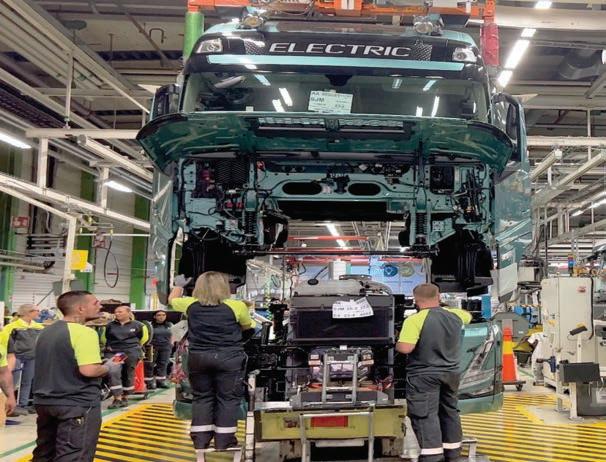
“We have sold around 1,000 units of our heavy electric trucks and more than 2,600 of our electric trucks in total. We expect volumes to increase significantly in the next few years,” said Roger Alm, presi dent of Volvo Trucks.
Volvo Trucks’ electric line-up covers applications like city distribution and refuse handling, regional transport, and construction.

Subaru Canada, Inc. has launched new resources to support the Subaru Certified Collision Repair Network. The all-new collision website (www.subarucollisioncare. ca) aims to educate Subaru drivers about choosing a Subaru Certified repair facility when a collision occurs and link them to the new Subaru online shop locator: www. subarucertifiedshop.ca.
The locator is designed to help owners find the closest Subaru Cer tified facility using their postal code, Subaru model and vehicle year.
The program ensures facilities have the tools, equipment, training, facilities, and processes necessary to repair Subaru vehicles according to manufacturer specifications, the company said.
The Goodyear Tire & Rubber Compa ny has launched the Goodyear ElectricDrive all-season tire and two new sizes for its ultra-high perfor mance tire, the Goodyear Electric Drive GT.
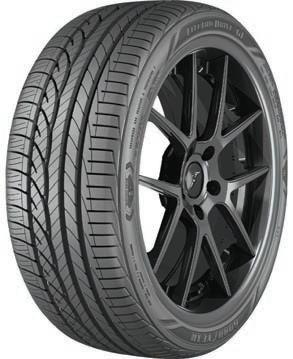
The Goodyear ElectricDrive comes with a 60,000-mile tread life limited warranty, V speed rating and is available in sizes 215/50R17 95V XL and 215/55R17 94V SL. This all-season tire is built for commuter touring sedans and CUVs, making it a fit for vehicles like the Nissan Leaf, Chevrolet Bolt and Volt and the Kia Niro EV.
Enterprise Truck Rental is cele brating 500 branches across North America, with 60 locations opened in the past year.
Opening at least one branch weekly for 60 consecutive weeks, Enterprise Truck Rental has expanded its foot print to meet demand for seasonal, project-based and e-commerce delivery rentals, as well as vehicles
for personal truck rental needs.
“Despite nationwide supply chain shortages and other challeng es across the industry, our truck business has seen a strong uptick in demand throughout the global pandemic — largely driven by the rise of online shopping and home delivery services,” said Mike Pugh, corporate vice-president, Enterprise
Truck Rental. “We’re proud to expand access to our truck rental services throughout North America to best serve our customers’ needs.”
The business manages a versatile fleet of trucks and vans to sup port key industries such as moving and storage, final mile, construc tion, and telecommunications, among others.
“Goodyear remains focused on offering innovative products and technologies for the EV segment and providing drivers with the quality, performance and enhanced treadwear they expect from our brands,” said Michiel Kramer, director, consumer product marketing.
Goodyear’s ElectricDrive tires are engineered with a load index to account for the heavier load capacity of EVs and features SoundComfort Technology to reduce interior vehicle noise.
The new EV tire has a specialized tread compound for all-season traction and long-lasting tread life, while an asymmetric tread pattern provides handling for wet or dry road conditions.
While things have improved, most OEMs agree the automotive supply chain has yet to return to normal. That’s according to Bob White, president of Holman, during the company’s Toronto Fleet Forum. Returning that supply chain to normal will take time, and companies must plan as far ahead, he noted.
With the phrase ‘Driving What’s Right,’ Holman held the forum September 8, bringing together over 200 fleet, finance, procurement, and transportation professionals for learning, best practices, and networking.
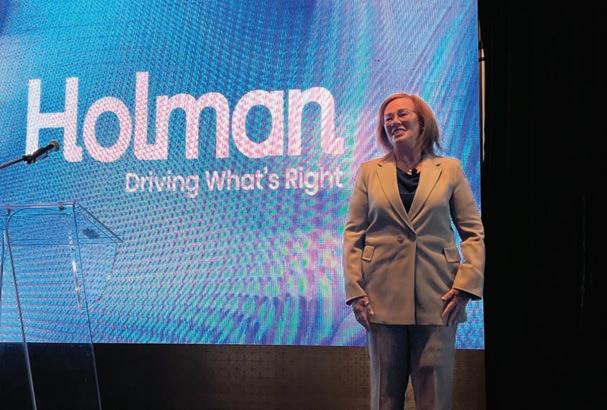
This year marks the first time in over three years the compa ny has held the forum, which was cancelled twice due to COVID-19 pandemic restrictions. The past few years have seen much indus try change, he noted.
For example, the company has come together under the brand
‘Holman Canada.’ While the name may be new in Canadian, the company’s legacy goes back 100 years. “We’ve been around a long time, focused on building value for our customers and on the automotive space,” he said.
Among the topics for the event was sustainability and how electri fication is shaping automotive and fleet. Are we ready for EVs? Hol man’s director of sustainability and EaaS, Emily Graham posed that question to the audience. “We believe the age of the electric vehi cle has just begun,” she said.

The tipping point for adopting new technology is five per cent, and net-zero emission vehicles hit 5.3 per cent of sales in 2021, Graham said. Several factors are accelerating this, including government funding. But charging infrastructure must expand to accommodate new electric vehi cles on the road today, she said.
Fleet managers should consider what’s right for their fleet, she noted. And rather than seeing EVs as a burden, many tenured drivers view them as a perk – they’re happy to drive them due to the technology. Holman had also created a transition plan in order to support clients as they switched to EVs, Graham said.
Craig Pope, district manager at Holman, discussed the automotive supply chain outlook. As vehicle demand fluctuated during the pandemic, OEMs had to adapt, Pope said. Now, in late 2022, the full year outlook is about 14.5 million vehicles. And while there’s a positive trend regarding fleet alloca tion, there’s still work to do to return to normal, he said.
Vehicle lead times have increased, Pope said, although he added that the chip shortage will correct at the end of 2024, helping shorten those lead times.
There will also be upward price pressure on vehicles throughout most of 2023, he said.
Michael Stallone, Holman’s VP of application development, discussed Holman’s fleet technology initiatives. The company has worked to make its app, Driver Insights, “easy and intuitive,” he said.
The three-phase project involves making the driver more effective, with the second phase focusing on fleet managers and procurement. The third phase tar gets field managers.
Among other initiatives, Holman has also rebuilt its driver scorecard. “This one is all normalized, mean ing that you can see, driver-to-driver, which one is operating their vehicle better and make decisions on train ing or other ways to work with that driver,” Stallone said.
The last speaker was Arlene Dickinson, entrepreneur, venture capitalist, and star of the show Drag ons’ Den. Dickinson told the audi ence about her family’s arrival in Canada when she was young, from South Africa. The family lived in poverty, landing first in Montreal before moving to Edmonton, then Calgary. She spoke about her rise to become one of the hosts of the popu lar show. For success, Dickinson encouraged the audience to cast aside Canadian reticence and “show up.”
“If anything, at this time and this place and this world, Canadi ans have to show up,” she said.
“We need to put our hands higher. We need to reach further. We need to stand for something.” FM/SP
Not so long ago, a special edition vehicle trim was an immediate tell. It meant a next-generation redesign was imminent, so the manufactur er was throwing the best of its parts bin at a bargain-priced ver sion to get as many units as possi ble out the door.
Today, things are not so certain. Take the 2022 Nissan Murano Mid night Edition as a perfect example. It definitely doesn’t herald a rede sign for 2023; next year’s model is already listed on the Nissan Canada website as a carryover. The upcom ing Nissan Ariya EV is a mid-size crossover, just like the Murano, so this special edition could be part of a multi-year lead-up to the Mura

no being discontinued entirely. Or maybe Nissan is just jumping on the blackout package trend and this all much ado about nothing.
Regardless, given that the Mura no was last redesigned for the 2015 model year, a light spruce-up doesn’t hurt. The Midnight Edition is based on the SL trim, which slots in just below the top-of-the-line Platinum, and adds on 20-inch blackout wheels, a blacked-out V-Motion grille, black-capped out side mirrors, and other dark exteri or accents.
The Murano’s exterior styling has held up well over the years. The
cinched floating roof design in particular is one of the nicest rear quarter window designs of the last decade. Its interior, on the other hand, is showing its age. There’s a lot of black plastic, especially on the dashboard just in front of the first-row passen ger, while modern designs tend to be more creative with colour and materials. The driver reads a manual speedometer, the low-resolution 8-inch touch screen and wired access to Apple CarPlay and Android Auto are behind the times, and climate controls turn and click instead of bouncing and buzzing. That said, everything is predictable
in its layout and function, which serves many drivers just fine.
This generation of Murano was one of the first Nissan vehi cles to feature the brand’s zero-gravity seats, and they hold up today as some of the most comfortable around for longer drives, which we confirmed over 800kms of highway driving. However, the heated seat func tion, which is standard on the front seats and available on the outboard rears, could be more powerful and is inconsistent in its delivery. Ventilated front seats are not available in the Midnight Edition but are offered in the Platinum grade, along with
1. This generation of Murano was one of the first Nissan vehicles with zero-gravity seats, which hold up as some of the most comfortable for longer drives.
2. A 3.5L normally aspirated V6 produces 260hp and 240lbs-ft of torque that peaks at 4,400rpm.
semi-aniline leather upholstery and NissanConnect services.

Under the hood, a 3.5L normal ly aspirated V6 produces 260hp and 240lbs-ft of torque that peaks at 4,400rpm. In combination with the continuously variable transmis sion, which has a D-step function to simulate the shifts of a tradition al automatic, acceleration and throttle response don’t call much attention to themselves. This is a good thing in a vehicle intended for getting from A to B without hassle. Steering feels heavier and more substantial than what is common in newer competition. In Canada, all-wheel drive is stan dard. This is a self-engaging sys
tem and there are no manual over ride or drive modes available.
Fuel consumption is acceptable for a vehicle with a gas-only pow ertrain at 12.0L per 100kms in city driving, 8.5 on the highway, and 10.4 combined as rated by Natural Resources Canada. Our test netted a real-world result of 8.7L/100 km in mostly high way driving.
However, higher fuel bills have become the Murano’s Achilles heel as electrified competition has appeared around it. The Toyota Venza now comes with a hybrid powertrain as standard equipment,
while the Hyundai Santa Fe offers both conventional and plug-in hybrid options. The Murano’s pri mary gas-only competition, the Ford Edge, is about to be discontin ued. There are other mid-size SUVs on the market like the Kia Sorento and the Mazda CX-9, but those have a standard third row, which eats into available cargo space. If the extra seating isn’t required, the second-row spaciousness and 908 litres of space at the back of the Murano might be of greater benefit. It’s also worth noting that the Murano took top spot in the 2022 JD Power Initial Quality Study.
The 2022 Nissan Murano remains, classically and unapolo
getically, an attractive and function al gas-powered mid-size two-row SUV – one of what appears to be a dying breed. If this package is what you’re after, get it while you can. FM/SP
Price (incl. freight and PDI): $48,068
Engine: 3.5L V6
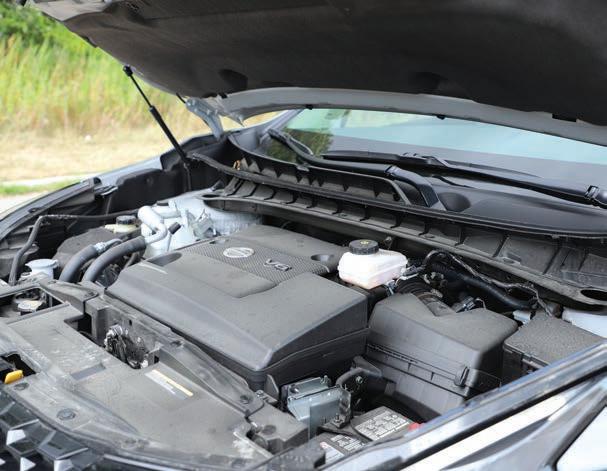
Power: 260hp, 240lbs-ft
Transmission: CVT Rated Fuel Economy (L/100km): 12.0 city/8.5 hwy/10.4 combined Observed Combined Fuel Econo my (L/100km): 8.7
This generation of Murano was one of the first Nissan vehicles to feature the brand’s zerogravity seats.
Despite manufacturing and supply chain difficulties the automotive industry is surging ahead with new technologies and designs. In fact, the 2022 model year has been a highwater mark for vehicle intro ductions and new technology –electric propulsion. Next year, 2023, promises to be just as good. Regarding trucks, here are just some of the automotive headlines for the coming year:
New GM twins, Chevy Colora do and GMC Canyon, are com ing, including some even wilder off-road versions. This includes the first-ever Trail Boss and an even more capable ZR2 – built on three specific chassis setups.
Toyota Tacoma is up for its sev en-year refresh. We haven’t seen anything yet, but we can expect meaningful changes.
Ford’s Tremor (off-road pack age) is being added to the F-150 but also to the Ranger and Maverick.
GMC introduces the Sierra Denali Ultimate – as the name implies it’s now the new top trim. GMC also now offers the AT4X off-road package in both its Sierra and the coming Canyon. A new Ford Ranger is coming in 2023.
The Lightning is a powerhouse; delivering 563hp and 775lbs-ft of torque pushed through its dual in-board electric motors. It comes standard with 4WD. It’s built on a standard F-150 frame and body (all normal F-150 specs apply).

A feature unique to the Lightning is Ford Intelligent Backup Power,
which can turn the truck into a power source for your home. With the ability to offload 9.6kW of power it can serve an average home for three days in the event of a blackout. The standard-range battery claims 370km of range and an available extended-range battery is targeting 483km of range. The maximum payload is 2,000lbs and maximum towing capacity is 10,000lbs.
Next year, 2023, sees the thirdgeneration F-150 Raptor debut. This new Raptor adds enhanced connected technology. It’s HO 3.5L EcoBoost engine now deliv ers better low-end torque, enables greater towing and increased maximum payload capability. Its projected fuel range is 800km.
The Raptor R (a V8 powered Rap tor) is coming later this year.

Resurrecting a name from the 1970s, the Maverick compact pick up is partly based on the current Escape. Maverick comes as a five-passenger, four-door pickup only. It is powered by a 2.5L hybrid that promises good fuel economy. It also features electronic AWD with drive modes like Mud/Rut and Sand, as well as Hill Descent Control. It has a projected fuel number of 5.9L/100km/city –or about 800km on a single tank of gas. For 2023, the Maverick gets the Tremor treatment. Avail able on XLT and Lariat series trucks it includes a one-inch lift, exclusive Trail Control, unique off-road front, and rear suspension.
The maximum payload is 1,500lbs and maximum towing capacity is 4,000lbs.
Late 2022 saw the intro of a new generation of Tundra. The single biggest change is the death of the 5.7L V8 and the introduction of the V6 twin-turbo engine. Two ver sions are available. The i-Force 3.5L V6 TT (389hp and 479 torque) and the hybrid i-Force Max 3.5L V6 TT (437hp and 583 torque). The sheet metal has been reworked, as has the grille.
Check out the new technologies added:
Tow/Haul mode now has two settings to respond to lighter or heavier trailers.
New cameras on the Tundra display multiple exterior angles on the 14-inch monitor.
New power extending and fold ing tow mirrors.
Blind Sport Monitor that includes the length of the trailer.
New rear air suspension avail able to auto-level any load.
A new Trailer Back Guidance system will back up a trailer (hands free) in a straight line.
A new fully boxed, splayed frame is designed to better han dle payload and towing.
Option packages will remain basi cally the same. A total of 17 trim configurations are now offered. The maximum payload is 1,710lbs and the maximum towing capacity is 12,000lbs.
For 2023, Chevy is adding the ZR2 off-road treatment to its Sil verado. Sporting front and rear e-lockers, a special facia and the Multimatic DSSV damped shocks (already found on the mid-size Colorado ZR2). The ZR2 includes the 6.2L , V8 mated with a 10-speed automatic transmission;
uniquely-tuned springs; Terrain Mode; 33-inch off-road MT tires; skid plate package and a unique bumper with removable end caps. The maximum payload is 2,250lbs and maximum towing capacity is 13,400lbs.

The big news at GMC is a new interior on all its trucks – and a new top-of-the-line package added to the Denali trim called the Ulti mate. This new version of Denali pushes Ultimate back into the lead in this high-priced, much-foughtover segment. Also new is the AT4X off-road package on Sierra. With the arrival of the Chevrolet Silverado ZR2 (Chevy’s desert racer truck) GMC has been wanting its own version. This AT4X has the same off-road goodies that the current Chevy ZR2 sports, and an even more luxurious interior. The maximum payload is 2,250lbs and maximum towing capacity is 13,400lbs.
The twins are going to be new this coming year. However, today, all we know is the small diesel has been dropped and there will be three off-road versions offered in addition to the regular trims.
For 2023, the Frontier gets a new 3.8L direct injection V6 that makes 310hp and 281lbs-ft of torque. The transmission is a nine-speed automatic. It features shift-on-thefly 4WD with 2WD/4HI/4LO modes. Frontier also has a fourwheel limited-slip system. The PRO -4X model adds an electronic locking differential, Bilstein offroad shocks and underbody skid plates. For 2023, Frontier is offer ing a unique Canadian-only model. The Frontier King Cab PRO -4X with six-foot bed will only be available in Canada. FM/SP

The 2022 model year has been a highwater mark for vehicle introductions and new technology.By Kate Vigneau
The use of telematics by fleets around the globe is expected to increase by 25 per cent per year, according to The Gartner 2021 Market Guide. This increase will come as more fleets adopt telemat ics for traditional uses such as moni toring vehicle location, mileage and idling and driver behaviour, as well as emerging uses like identifying candidates for and tracking the results of fleet electrification.
The adoption of telematics is increasing because the technology is proven, and the return on invest ment (ROI) is almost assured. In a 2021 market research report of the transportation and services industries, Bobit reported that fleets experienced an average eight per cent decrease in fuel costs, 11 per cent reduction in accident costs, and a 10 per cent decrease in labor costs.
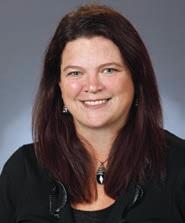
The top benefits of telematics in traditional roles include:
Monitoring vehicle location to prevent theft and ensure productivity.
Vehicle tracking is a two-edged sword. Organizations naturally
want to know where their assets are at all times. At the same time, employees are resistant to the notion of being under constant sur veillance. Vehicle monitoring is not a problem when employees are where they are supposed to be, per forming work functions. Organiza tions need to emphasize the consid erable advantages of vehicle tracking for employee safety and vehicle recovery in case of theft.
Tracking vehicle utilization to right-size the fleet. One of the quickest ways to improve fleet productivity is through a for mal utilization analysis. Telematics provides the data on vehicle move ments, not just odometer readings, but how many trips the vehicle takes and how many hours it is away from its home location. This informs the decision to retain, rotate, pool, or eliminate an asset.
Reducing fuel costs due to idling, traffic, driver behaviour and poor maintenance.
Conventional fuels are usually the fleet’s biggest expense after depreci ation. As such, its consumption should be closely monitored and reduced where possible. Telematics
can help organizations understand their fuel spend and whether savings are possible due to excessive idling, poor routing, driver behaviour, or even maintenance issues. With telematics, fleet managers have a tool to help determine the reasons behind high fuel consumption and take corrective actions.
The most important resource an organization has is their employees. They must be protected with a commitment to vehicle safety, sup ported by telematics. Drivers are protected when the organization knows where they are, identifies when they are involved in risky behaviour, and takes formal steps to correct that behaviour.
Eco-driving describes the driver behaviours that prioritize safety and sustainability. All drivers should seek to maximize fuel efficiency by selecting the best routes, avoiding hard stops or fast accelerations and driving at a speed appropriate for conditions. Telematics can identify driver behaviour that need improve ment and provide surveillance and data to help drivers improve.
Well-maintained vehicles are more fuel-efficient and safer. Regular preventive maintenance (PM) is necessary to minimize the cost of downtime and potentially hazard ous breakdowns on the road.
Telematics can allow you to set cus tom parameters for PM inspections, so the organization complies with industry best practices.
Customer service is of importance to both corporate and government fleets. Fleets only exist to support the primary operations of the orga nization. That organization cannot be supported if fleet vehicles are lost, inefficient or poorly maintained. Since telematics can help prevent this, it is a vital tool in ensuring high levels of customer service.
There are clear benefits to using telematics for a variety of tradition al fleet functions. As organizations seek to meet greenhouse gas emis sions reduction targets, telematics
has an all-new purpose. In the quest to convert fleets to electric vehicles (EVs), telematics can be used to assess current fleet performance, identify candidates for EV conver sion and monitor and assess results.
Fleets can’t undertake EV conver sion without a thorough under standing of current fleet systems, polices, utilization, operations, and costs. In this stage, telematics can assist in vehicle monitoring, mile age tracking, fuel tracking and establishing an emissions baseline. A utilization study should always be done prior to electrifying a fleet to ensure the fleet is the right-size before conversion efforts start.
An analytical approach to EV conversion will have the best opportunity to decrease emissions
while ensuring support to opera tions. Analysis should start with the existing fleet replacement plan and always consider when units are due for replacement.
Telematics can provide a range of data to identity and prioritize vehicles for conversion. The data would include:
Frequency and length of trips
Time spent at work locations
Scheduling of EV charging or petrol vehicle refuelling for optimal advantage
Priority for electrification should be those vehicles that are due for replacement and those that will make the most difference – high mileage or frequent idle assets where an EV option currently exists.
tracked, and adjustments made if targets are not being met.
Sometimes sustainable plan ning is done with the best inten tions but gets sidetracked. To avoid this, creating a measure ment framework from the start will ensure that sustainable improvements (or degradation) are tracked and reported to senior management at approved intervals.
Overall, telematics can help in every step of fleet electrification from the initial suitability assess ment to goal attainment. Telematics are a powerful tool in both tradi tional and emerging rolls and their use will continue to grow. FM/SMonitoring and assessing results
Telematics play an important role in the ongoing assessment of fuel and emissions reduction and compliance with net zero targets. A baseline should be set prior to an electrification plan being put in place so progress can be
Toronto, ONTelematics can identify driver behaviour that need improvement and provide surveillance and data to help drivers improve.
Five years after the adoption of the Canada-European Union Compre hensive Economic and Trade Agree ment (CETA) and domestic Canadi an Free Trade Agreement (CFTA), Canadian public institutions face significant challenges in meeting the global governance standards con tained in those trade treaties. This article highlights a series of recent compliance issues from across the Canadian public sector.
Starting at the federal level, in its March 2021 ruling in Ocalink Tech nologies Inc. v. Department of Pub lic Works and Government Ser vices, the Canadian International Trade Tribunal found that a 2019 federal statutory amendment breached international legal stan dards by removing the transparency requirements that previously applied to national security sole-sourcing. To make matters worse, the Tribu nal also found that the federal gov ernment misused that now-shrouded national security exception to engage in pandemic-related sole-sourcing that did not properly fall under the national security exception. More recently, the federal government also failed to meet its five-year CETA deadline for creat ing a national posting portal for all Canadian bidding opportunities at federal, provincial and local levels.
Turning to Ontario, the provin cial government has also engaged in statutory reforms that run con trary to its treaty commitments. In March 2022 the provincial govern ment enacted the Building Ontario Business Initiative Act, which will require Ontario public institutions to apply preferential treatment, as mandated by future provincial cab inet regulations, to Ontario compa nies in public sector contract
awards. This new statute flies in the face of well-established public procurement rules. Non-discrimi nation, a core global standard in public procurement, was originally adopted by Canada’s federal, pro vincial, and territorial govern ments in the 1990s and was con firmed again under CETA and the CFTA in 2017. By mandating local preference by Cabinet fiat, the new local preference scheme would expose Ontario public institutions at all levels to legal challenges for treaty violations.
In fact, successful challenges against local preferences have already begun. In its June 2022 ruling in Thales DIS Canada Inc. v. Ontario, the Ontario Superior Court of Justice – Divisional Court struck down an Ontario driver’s licence and health card RFP due to domestic production requirements that breached CETA’s open compe tition rules. In that case, a Europe an bidder with card production facilities in Poland brought a suc cessful legal challenge against Ontario’s made-in-Canada require ments. The Court struck down the RFP for breaching Ontario’s inter national trade treaty duties after finding that the government failed to justify its domestic production restrictions under security or pri vacy grounds.

The Court also struck down Ontario’s prior decision to reject the complaint under the govern ment’s bid protest mechanism. Two judges ruled that decision invalid due to a lack of evidence support ing the government’s position, with the third concurring judge stating that Ontario “properly concedes” that its bid protest decision was not independent or impartial and stat
ing that Ontario failed to comply with Article 19.17.4 of CETA. This case casts a major shadow over the validity of future procurements that rely on flawed bid protest procedures.
Unlike Ontario, Western Canada has established an independent treaty arbitration process for bid protests. From improper sole-sourc ing to restrictive supplier rosters to anti-competitive local warranty requirements, those arbitrations have resulted in multiple non-com pliance rulings across Alberta’s municipal sector.
Local bid protests have recently spread beyond Alberta’s borders. In a recent decision, an arbiter found that the Saskatchewan government used CFTA-violating local labour requirements under a “community benefits” scheme to award highway maintenance work to a Saskatche wan company. Rather than accept ing that decision, Saskatchewan went to court in an unsuccessful attempt to overturn the ruling. In its February 2022 decision in The Ministry of Highways for the Prov ince of Saskatchewan v. West-Can Seal Coating Inc., the Queen’s Bench for Saskatchewan dismissed the government’s application after finding no grounds to overturn the arbiter’s decision.
Alberta also faces treaty com pliance issues at the provincial level. In its June 2022 report enti tled Alberta Infrastructure – Pro curement Practices, Alberta’s Auditor General found multiple treaty infractions at the provincial infrastructure agency. The audit, which included a four-year sam pling from $4.5 billion in con
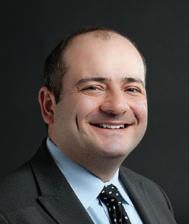
struction projects for schools, hos pitals, and other government facilities, found rushed bidding deadlines that breached treaty standards, as well as the failure to properly screen for conflicts of interest or secure confidential bid der information. The audit also found inconsistent bid evaluation practices and the failure to main tain proper evaluation records, both of which could undermine the defensibility of any resulting con tract awards if losing bidders chose to challenge those results.
As these recent examples show, treaty compliance continues to be a widespread problem across the Canadian public sector. Public institutions need to work towards updating their procurement prac tices or risk becoming the next non-compliance case study. SP
“Treaty compliance continues to be a widespread problem across the Canadian public sector.”

From








































